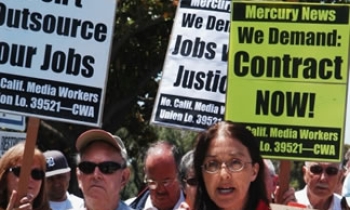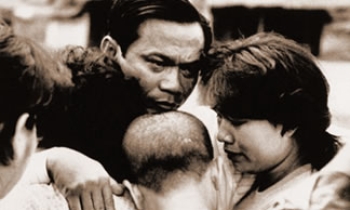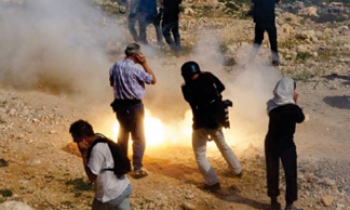The imperfections of the newsgathering craft were glaring this week when television viewers and newspaper readers across the country were given a joyously miraculous survival story regarding trapped West Virginia coal miners.
Unfortunately, that euphoric good-news story turned out to be wrong and had to be replaced by the tragic reality that only one of the 13 miners was rescued alive.
Some in our profession were quick to try and shift some or all the blame to mine officials who inexplicably waited hours before correcting misinformation they knew to be circulating. Others pointed to supposed confirmation by West Virginia Gov. Joe Manchin, who told reporters he too had been told the men were alive.
Still, no matter how you slice it, it was not a proud moment for American journalism.
And, I suspect that casting aspersions at inept communications by mining company officials, or trying to explain unforgiving production deadlines or printing and delivery schedules do nothing to turn the monumental goof into a confidence builder among news consumers.
Reports that 12 of the 13 miners had survived the explosion and 41 hours of being trapped were tragically wrong. And, the ultimate responsibility rests with news organizations that aired and published those erroneous reports.
Usually, close proximity is an advantage in news reporting. But in this case, West Coast editors had a clear advantage over their counterparts in the Eastern and Central time zones.
Only the early editions of the Seattle Post-Intelligencer and The Seattle Times carried the erroneous story. Most of those papers, nearly 30,000 copies of the P-I and nearly 25,000 copies of The Times, went to outlying areas of the state, not to readers in Seattle and immediate environs.
The wire service report that ran in the P-I's first print edition on Wednesday was careful in its attribution, making clear in the first paragraph that the reports that the men were alive came from hopeful family members. Before the article jumped to an inside page, there was a paragraph that read: "Neither the company nor the Governor's Office immediately confirmed that the men were alive."
But for readers who got copies of our first edition Wednesday morning, meticulous text editing hardly countered the impact of the bold lead headline that read, "12 W. Va. miners found alive."
One confused and angry reader asked, "What in the devil is wrong with our news service? ... You've got 12 people living and now they're dead."
"I'm disappointed," another who got the early edition called to tell us. " ... Your headline says they are all alive. You are wrong."
The P-I's Web site carried the erroneous reports from 9:20 p.m. Tuesday until shortly after midnight Wednesday morning.
Monitoring live reports on CNN, online producer Shannon Fears informed our news desk, just before second print edition deadline, that the story was changing dramatically. To his credit, Fears also wrote and posted an extraordinary bulletin on our Web site, headlined "Confusion at W. Va. mine," that said:
"Just a few hours after being told that 12 of 13 men survived more than 40 hours trapped in a coal mine, stunned relatives apparently learned only one survived. Details are still emerging; we expect a new story shortly."
A few minutes later, by 12:14 a.m., a revised Associated Press story with the more-accurate grim news was posted on our Web site.
Across the country, news organizations scrambled heroically as it became apparent that the upbeat story about the miners' survival had no basis in fact.
Back East, editors stopped their presses in the wee hours of the morning to redo their front pages with stories that reflected the tragic reality. But by that time, millions of newspapers were on their way to homes, newsstands and coin boxes.
At the Los Angeles Times, the largest newspaper in the West, editors believe they were able to retrieve 200,000 newspapers that were printed with the erroneous story, without a single one being delivered to readers.
"We had the time zone in our favor, of course," acknowledged L.A. Times Editor Dean Baquet. "But we also stopped trucks and did everything we could and didn't get a single bad copy delivered to a reader."
Few other major newspapers were as lucky or as industrious.
This cruel, unfortunate episode stands as another black eye for a media struggling to earn the public's trust. I have no Solomonic answers. But to the miners' families and readers who got the P-I's early edition on Wednesday, I offer apologies and a pledge that the P-I news professionals will be among those examining how we could have performed better and more responsibly.
Kenneth F. Bunting is associate publisher. E-mail: kenbunting@seattlepi.com.









